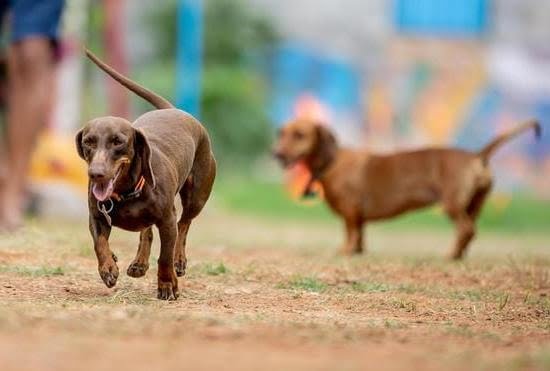Introduction- Benefits of having a well-trained dog
One of the greatest benefits of owning a dog is having a loyal friend and companion. Training your dog allows you to get that much more out of your relationship, helping them become better behaved and more responsible. While it is important to ensure dogs are well groomed, fed and exercised regularly, teaching basic obedience commands can also greatly contribute to their wellbeing and create good habits and behaviour for life. Training your dog helps promote safety for yourself, other people and animals, as well as ensuring that your pet’s needs are being heard, respected and attended too. They learn how to interact with their environment in a positive manner while understanding their boundaries as they progress. Additionally, it has been proven that an active lifestyle conducted in a positive environment contributes to an improved overall wellness not just physically but also emotionally. An untrained dog can often be dangerous both in the home or out and about which is why providing discipline from an early age can help prevent mischievous behaviour.
Applying the Right Mindset for Training Your Dog
Training your dog should be an enjoyable and rewarding journey for both you and your pup. To achieve success, it is important to have the right mindset from the start. Establishing clear goals and a structured plan of action will help you stay organized, focused, and motivated throughout the process. Before diving into training your dog, take some time to determine which commands you would like to teach them first. Once you’ve established that plan, be sure to stay consistent in carrying out those commands with your pup. Despite how much faster things may seem at first, it’s important not to rush through the basics so that all elements of training can sink in for both you and your pup. If regularly practiced, these methods are proven tools for living an enjoyable life alongside your newly trained pup.
Basics of Training and Behavioral Modification
Yes, you can train your dog. Training consists of teaching dogs simple commands using methods of reinforcement and punishment. Reinforcement is the process of rewarding desirable behaviors so the dog will be more likely to do them again in the future. Examples of reinforcements include edible treats, verbal praise, and physical affection. On the other hand, punishment is a process used to suppress undesired behaviors. This includes techniques such as verbal or physical reprimands or withholding rewards after an undesired behavior has occurred. It is important to note that it is impossible to completely eliminate undesirable behaviors and punishments should be used sparingly and with a purpose so that an animal understands what not to do rather than being fearful or resentful. Understanding these basic principles can help you start training your dog while avoiding frustration and even potential harm.
Teaching Your Dog Proper Interactions
You can certainly train your dog to learn proper interactions with other dogs and people. This is important, as otherwise your pup could become an unwelcome nuisance while out in public. The best way to start training your dog is by attending obedience classes or private lessons with a qualified instructor. These classes should focus on teaching commands such as sit, stay, come, and heel; as well as how to properly meet other dogs and people in a friendly manner. Additionally, practice in the home can help reinforce these behaviors so they become second nature to your pup when you are out together in public places. Lastly, it is important to be consistent with enforcing any commands given and rewarding good behavior: that way both yourself and pup know what is expected of each other in any situation!
Commands
Yes, you can definitely train your dog! Training the basic commands is a great place to start. Start with simple commands such as “sit”, “stay”, and “come”. Rewarding your dog for good behavior with food or treats will help encourage them to do more. Practice sessions should be kept short and fun; make sure to end the session on a positive note by playing a game, providing a treat, or offering some kind of praise like petting. Training consistency is important; practice the same command on different occasions and in different places so your pup learns it in all types of scenarios. Keep practicing and eventually you’ll see results!
Stimulating Training Sessions
Yes, you can train your dog! Training is a great opportunity for bonding between pets and their owners, as it helps to strengthen the relationship. Stimulating training sessions should be rewarding and exciting for your dog, so it’s important to ensure that there’s plenty of variety in terms of rewards and activities. A great way to keep your pup engaged is to use toys, treats and other items they’ll find stimulating. Treats are an excellent way to encourage good behavior – when used correctly they’ll quickly become associated with positive reinforcement when your pup successfully completes a task. When introducing new commands and behaviors, it’s important to stay consistent – repeating the same phrase or command will help reinforce learning and make the process easier for both you and your pet. Additionally, some indoor training games are perfect for those rainy days when outside play isn’t an option. Games like hide and seek are fun for everyone involved – challenging them mentally as well as physically can be very beneficial for their development (in addition to being lots of fun).
Troubleshooting Difficulties
Training a dog can be a challenging and time-consuming process. Dogs are easily distracted, both by their environment and by the people around them. To help troubleshoot these difficulties in training, try some of the following techniques:
1. Create an environment that is conducive to learning – Make sure your training area is free from distractions like loud noises or people walking around. A quiet and familiar space encourages focused attention.
2. Limit mistakes by giving clear instructions – Instead of saying “off” when you want your dog off something, give them a command such as “leave it”. This will help your dog understand what you want more clearly and quickly, resulting in fewer frustrating mistakes for both of you.
3. Encourage positive behaviors – Reward good behavior immediately and consistently with treats or praise to ensure your pup knows exactly what’s expected of him or her. Positive reinforcement helps keep dogs on track during training sessions and boosts confidence levels as well.
4. Take breaks – Don’t get discouraged if it takes longer than expected to master a skill — everyone needs a break! A few minutes every hour can help take the pressure off both of you while still allowing progress towards desired goals.
Long-term Training and Maintenance of Your Dog
Training and maintaining your dog requires ongoing effort. It is essential to recognize that, although you may be able to teach your pet some commands and behaviors, it takes energy and dedication to ensure they stick. A key strategy for long-term training success will be consistency – each family member should stay consistent in their approach and use the same set of commands at all times.
Reward-based methods can be an effective way to reward desired behaviors – treats, toys and physical affection should be used as incentives for good behavior, but only when these behaviors are consistently repeated. Furthermore, punishments must not be too harsh or drastic, as this could cause your pet to fret or develop behavioral issues in the future. An important factor in effective training is reinforced learning; repetition of commands is critical so that your pet will remember them years down the line.
Finally, socialization with other pets can help build good habits both inside and outside of the home environment. Taking walks together or playing with other dogs (under controlled circumstances) can help create positive relationships your pet has with their peers. In conclusion, with patience and consistency, you can train your dog to develop beneficial behaviors while avoiding bad habits over time.
Exercise Routine Developments
Yes, you can train your dog. Training is important for both humans and animals for a variety of reasons ranging from building trust to teaching basic commands such as “sit”, “stay”, and “lie down”. It also helps build an owner-dog bond and supports a healthier lifestyle. Exercise routines should also be considered while training your dog. This includes regular walks, runs, playtime, swimming, games and other activities that both you and your pup enjoy. Developing healthy physical and mental routines are always worth investing in yourself and animal alike; good routines mean happy hearts! Additionally, reinforcing positive behavior with rewards such as treats or praise will help build trust between you two and lead to more success when learning new skills or commands. With patience and consistency, you can be sure to achieve an effective training session with your furry friend – so don’t forget to have fun too!
Conclusion
Training your dog is one of the best investments you can make. With regular positive reinforcement and consistency, you can create a strong bond with your dog that will last a lifetime. Training empowers you to teach your pup new behaviors, build better communication between the two of you, prevent problem behaviors from developing in the first place, and give your pup the skills needed to be confident in any situation. The rewards are immeasurable—greater understanding and trust, healthier relationships, and a deeper connection that cannot be achieved any other way. So yes, you can train your dog!

Welcome to the blog! I am a professional dog trainer and have been working with dogs for many years. In this blog, I will be discussing various topics related to dog training, including tips, tricks, and advice. I hope you find this information helpful and informative. Thanks for reading!





